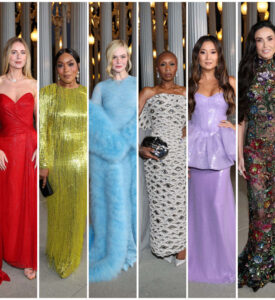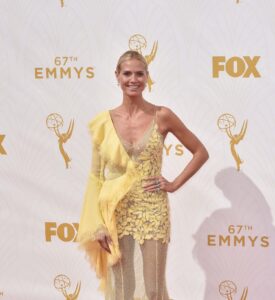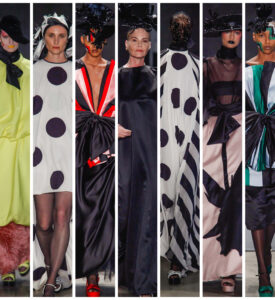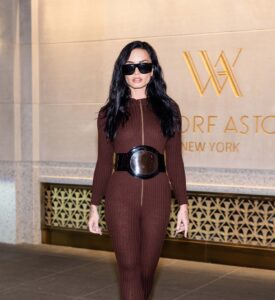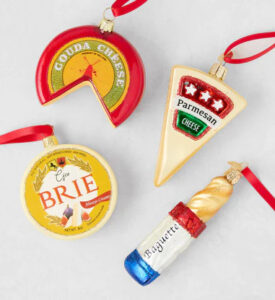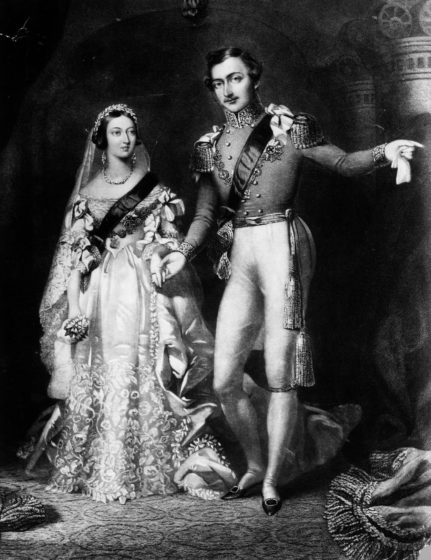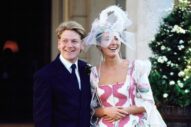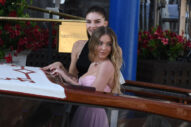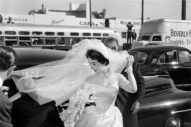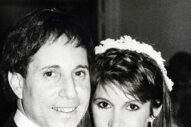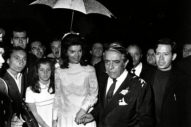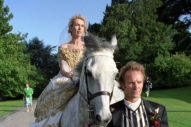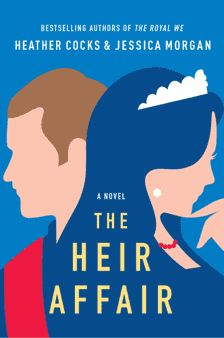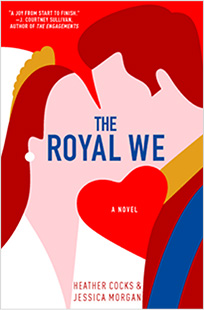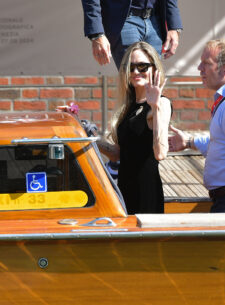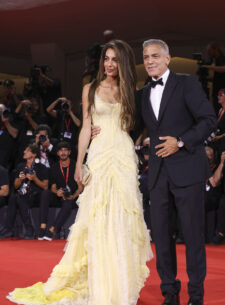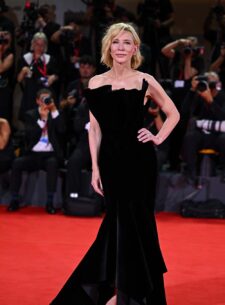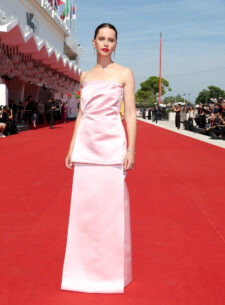My favorite detail about this famously horny royal pair is that Victoria was so distraught when Albert prematurely shuffled off this mortal coil in 1861 that she thereafter and forever more titled her diaries things like 1891: The Thirtieth Year of My ABJECT AGONY!!!!!!!!!!. Victoria was never, as I understand it, a particularly subtle human (my source for this is: various things I’ve heard on tours of royal residences; the fact that she bought this for ten million pounds in 2020 money, collected from the public! [I technically love the Albert Memorial but understated it is not; even the official Royal Parks website calls it an “extravaganza”]; and also The Heir Apparent, a book in which she is a total pain in the butt). Today is the anniversary of these two pledging their troth to one another in 1840, so it is their turn in the Royal Wedding Rewind machine.
Fun Facts:
a. I am never not delighted by this post-wedding night entry in Victoria’s diary:
I NEVER, NEVER spent such an evening!!! MY DEAREST DEAREST DEAR Albert … his excessive love & affection gave me feelings of heavenly love & happiness I never could have hoped to have felt before! He clasped me in his arms, & we kissed each other again & again! His beauty, his sweetness & gentleness – really how can I ever be thankful enough to have such a Husband! … to be called by names of tenderness, I have never yet heard used to me before – was bliss beyond belief! Oh! This was the happiest day of my life.
OKAY! Good for you two, girl! Get it!
b. Victoria famously wore white, which was not as typical at the time as it is now, and which kicked off a trend for white wedding gowns which has certainly had real staying power. Wikipedia has OODLES of details about her look:
The lace was designed by William Dyce, head of the then Government School of Design (later known as the Royal College of Art), and mounted on a white satin dress made by Mary Bettans. The plain, cream-colored satin gown was made from fabric woven in Spitalfields, east London, and trimmed with a deep flounce and trimmings of lace hand-made in Honiton and Beer, in Devon. This demonstrated support for English industry, particularly the cottage industry for lace. The handmade lace motifs were appliquéd onto cotton machine-made net. Orange blossoms, a symbol of fertility, also trimmed the dress and made up a wreath, which Victoria wore instead of a tiara over her veil. The veil, which matched the flounce of the dress, was four yards in length and 0.75 yards wide. Victoria’s jewelry consisted of a necklace and earrings made of diamonds presented to her by the Sultan of Turkey, and a sapphire cluster brooch given to her by Albert a day earlier. The slippers she wore matched the white color of the dress. The train of the dress, carried by her bridesmaids, measured 18 feet (5.5 m) in length.
c. Victoria was obsessed with this aforementioned wedding lace and wore it all the time: to several christenings of her children, to various children’s weddings, for her (very famous) Diamond Jubilee portrait. She was also allegedly maybe buried with her wedding veil over her face. (I thought that her wedding lace was used to make the traditional Royal Baby Christening Gown, but apparently she just had that gown made by the same folks who did her wedding lace.)
d. This is a super interesting post about Victoria’s dress at FIT’s website, which I absolutely recommend. It has amazing photos of details of the dress, as well as a lot of factual insight, and is just a very fascinating use of your time.
e. Victoria’s engagement ring sounds RAD — she was apparently buried in it, so we don’t have any good modern photos. Regardless, it’s described as a “18-carat gold, serpent engagement ring. The head of the serpent was adorned with rubies for the eyes, diamonds for the mouth, as well as a large emerald set at the centre, representing Victoria’s birthstone. Whilst a serpent may seem an unusual choice for an engagement ring, it is an ancient Roman symbol for everlasting love and was a particularly popular expression of adoration during these times.” I personally LOVE snake rings and now I feel like if I get one, I can also wax pedantically about Olden Times. Win win!
f. Shall we discuss bridesmaids? There were many and they were all VERY fancy. Let us turn once again to Professor Wikipedia, whom I believe to be unimpeachable, for some quick Deep Dives:
- Lady Mary Howard (1822–1897), later Baroness Foley of Kidderminster: She did nothing scandalous but her brother was Chief Butler of England. Neato!
- Lady Caroline Gordon-Lennox (1819–1890), later Countess of Bessborough: She apparently accidentally took out her husband’s eye with her parasol on their honeymoon. This had the effect of making him “rather sharp-tempered.” I guess it might do.
- Lady Adelaide Paget (d.1890), later Lady Adelaide Cadogan: Her father lost part of his leg to a cannon at Waterloo! You will never win an argument against that. His leg has its own Wikipedia page.
- Lady Eleanora Paget (d.1848), later Lady Graham: she’s the niece of the previous one and has literally NOTHING dramatic AT ALL in her background, which was probably nice for her.
- Lady Elizabeth Howard (d.1891), later Lady Grey: She is a cousin of the Spencers, who — spoiler! — later pop up in the annals of British Royal Wedding History.
- Lady Wilhelmina Stanhope (1819-1901), later Duchess of Cleveland: She was allegedly the most beautiful woman at court, she was a noted historian/genealogist, and — this is enjoyable to me personally — because she had no children, the Duchy of Cleveland became extinct and we were able to use it in The Royal We/The Heir Affair.
- Lady Sarah Villiers (1822–1853), later Princess Esterhazy: Her mother famously had many a lover. Per Wiki, when she asked her spouse “why he had never fought a duel to protect her honour, he replied that he could hardly fight every man in London.” Zing! Also, “Princess Esterhazy” sounds very fancy, but my lengthy research (a few minutes) indicates that at this point in history, they were posh but poor.
- Lady Elizabeth Sackville-West (1818-1897), later Duchess of Bedford: I assume she’s related to Vita Sackville-West, but I can’t quite figure it out because the Sackville-Wests have a VERY COMPLICATED family tree.
- Lady Ida Hay (1821–1867), later Countess of Gainsborough: Apparently, she “embraced Roman Catholicism on New Year’s Day in 1850.” She and her husband lived in a park that people argued about a lot, the best I can tell.
- Lady Frances Cowper (1820–1880), later Viscountess Jocelyn: She was a for-real artist and photographer, and was apparently ALSO very pretty.
- Lady Mary Grimston (1821–1879), later Countess of Radnor: She had TWELVE CHILDREN.
- Lady Jane Pleydell-Bouverie (1819–1903), sister-in-law of the above, later Lady Jane Ellice: Jane gave us nothing.
You can see a drawing of their bridesmaids gowns here. Victoria designed them herself!
[Photos: Getty, Shutterstock. We use affiliate links where available]
